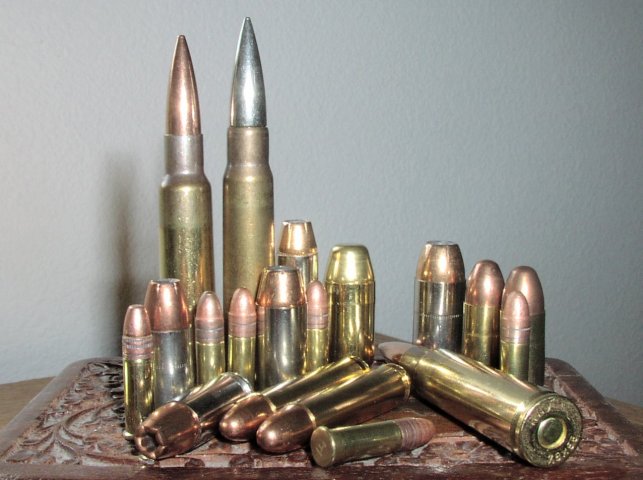|
|
|
Copyright
© A.D. 2007
by M.
D. Van
Norman.
|
|

Cartridges are available in a wide variety
of shapes, sizes, and loadings.
|
As a firearm loaded with
the wrong cartridge is potentially hazardous to the user, ammunition
designers and manufacturers have tried to clarify this matter in a
number of different ways over the years. Various combinations of the
projectile’s diameter with information such as the cartridge’s powder
load, year of introduction or adoption, designer’s name, case size or
length,
and other descriptors have all been used. These designations are also
commonly abbreviated. For example, the .30-06 Springfield cartridge
fires a .30-caliber bullet, was developed by the U.S. Springfield
Armory, and was adopted for military use in A.D.
1906.
The metric system probably gives the best approximation. Providing both
the bullet diameter and the case length in millimeters, it suggests the
cartridge’s possible capabilities. This also makes comparisons of
different cartridges somewhat easier, though it is often necessary to
convert them to their metric equivalents. For example, the differences
between the 9mm Luger (9×19mm) and .45-ACP (11.43×23mm)
cartridges are readily apparent when their full metric equivalents are
understood.
Even metric designations have their limitations. Old black-powder
cartridges are usually larger than modern
smokeless-powder cartridges, so a modern cartridge derived from an
earlier black-powder version may be larger but less powerful than a
cartridge of more recent design. For example, the .38 special
(9×29mm rimmed) is much longer than the 9×19mm rimless
cartridge but generally operates at lower pressures.
Ignition systems, propellant speeds, pressure ratings, and bullet or
shot types are also characteristics that can be confusing or difficult
to determine. Thorough research is imperative for the study of
ammunition, but now the correct information is rarely more than a few
clicks away.
|
|



